|
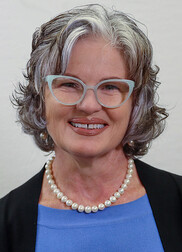
Each September, we gather at the Memorial on the Oregon State Hospital (OSH) Salem campus, to commemorate the lives of former patients and celebrate the reunification with their families.
It is most fitting that we are holding this ceremony during National Recovery Month – a national observance held every September to recognize people who are living with mental and/or substance use disorders – and their capacity to live healthy and rewarding lives.
On behalf of OSH staff, we promise to continue striving to ensure the people the hospital serves today – and those it served in the past – are not forgotten.
Dolly
|
|
|
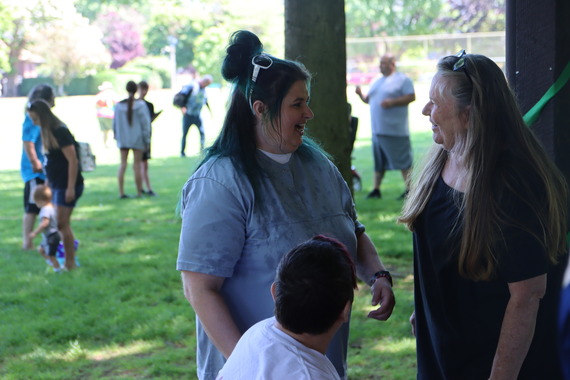 OSH patients Christina and Kelly (pictured above) recently attended a picnic sponsored by Dual Diagnosis Anonymous, an international peer-run support organization. The social events build community and model ways to enjoy life without alcohol and drugs.
Former Oregon State Hospital patient, Shericea Deleon has made it her job to ensure that others on the road to recovery don’t walk it alone.
Deleon is an outreach specialist for Dual Diagnosis Anonymous (DDA), an international peer-run nonprofit organization created to support those diagnosed with a mental health concern and addiction. As part of her work, Deleon facilitates recovery groups and provides peer support.
“As a facilitator, I’ve had experiences with a lot of symptoms that my peers experience, so I understand and can tell them what works for me,” she said.
Deleon first learned of DDA while an OSH patient. For the past 15 years, the hospital has partnered with the organization to provide peer support groups. Throughout the week, about a dozen group sessions are offered to patients on both the Salem and Junction City campuses, said Cee Carver, OSH peer recovery director.
Because the DDA support groups are facilitated by their peers – people who have experienced both addiction and live with mental health challenges– that shared experience helps build trust, allowing patients to open up in ways they may not in a traditional therapy session and start healing, Carver said.
“A lot of people who have extremely traumatic backgrounds have difficulties trusting other folks, and there is also a culture within that unless you’ve experienced what I’ve experienced, you have no standing to tell me what I could do to make my life better,” she said. “So, both my department and forums like DDA provide them the camaraderie of having other folks with shared lived experience to kind of validate the recovery process. ‘How do you know where I’m at if you haven’t been where I’ve been?’ That’s a huge component of people with trauma histories and difficult backgrounds.”
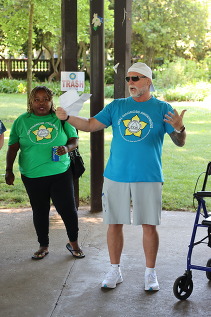 |
|
DDA outreach specialist Shericea Deleon (left) and DDA executive director, Doyal Smith (right) at a recent DDA picnic.
Smith says that many former patients like Deleon are now facilitators and all DDA operational staff are dual diagnosis peers. "This is not a job, it's a healing process," Smith said. "It gives back and it gets back. When we work with people who have co-occurring diagnoses, we know how important it is to give back. It gives them hope. It gives them purpose."
|
|
|
|
Mary Ann “Minnie” Gilliland Smart is making her way home to Saskatchewan, Canada, after almost 100 years, thanks to her great-great nephew, David Gilliland’s interest in genealogy and the work of an Oregon State Hospital (OSH) volunteer, Phyllis Zegers.
“I was following a rabbit trail trying to piece together a bio about her and came across findagrave.com,” Gilliland said. “Phyllis did such a wonderful job on Minnie’s bio. It was my first inkling of the connection to OSH and her current situation.”
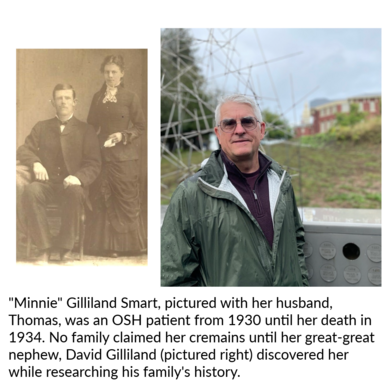
There are thousands of more stories like Minnie’s. OSH is the custodian of the cremains of 3,448 people who resided and died at Oregon institutions from 1914 to 1973 and had no one to claim their remains. Since 2013, Zegers has helped connect more than 1,100 families.
Each September, the hospital holds an annual ceremony to honor those who have died and remain interred in the walls of the cremains memorial on the Salem campus. The ceremony is also a time to recognize those who have been reunited with their families.
This year, 76 cremains were reunited with family members, several of whom attended the ceremony and claimed their relatives’ cremains.
Gilliland and his cousin, Rick Ewen decided to make the trek from Saskatchewan to Salem to understand more about what Minnie experienced while a patient from 1930 until her death in 1934.
“It’s about honoring Minnie’s memory. It seems like the right thing to do,” Gilliland said. “We decided early on because there was a repatriation opportunity that we would want to bring her home.”
|

Since 2013, Zegers (pictured right) has helped connect more than 1,100 families.
Zegers’ own genealogy research into an ancestor who was admitted to OSH led her to discover the cremains directory. Though her ancestor wasn’t cremated at the hospital, Zegers felt drawn to learn more about those who were waiting for their families to find them, find their stories.
“That to me turned out to be more fascinating than my ancestors,” Zegers said. “At that point, I thought, ‘here are these folks who have been forgotten and they should be honored in some way.”
|
|
|
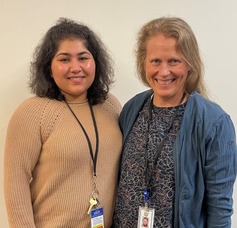
In the final year of her residency, Dr. Yassmin Atefi, (pictured on left) was seeking a job that would enable her to grow her skills and work in a team environment.
“It was during the pandemic, and I was doing new patient outpatient appointments that were only 30 minutes to an hour. I was feeling isolated,” Atefi said. “I realized it wasn’t something I wanted to do forever. I need to be around like-minded people and have resources to help people the way I want to help them.”
At the time, she shared her frustrations with her mentor, Oregon State Hospital (OSH) psychiatrist Dr. Vanessa McDonald (pictured on right). The two grew to know each other at a Corvallis hospital where McDonald worked weekends and Atefi completed her psychiatry residency. McDonald also supervises residents during their rotations at OSH and enjoys helping psychiatrists early in their career identify their next steps.
“She told me, ‘I work at this place where you’d get to work with great psychiatrists with support and you wouldn’t be alone,’” Atefi recalled. “I thought if I get to work with a lot of Dr. McDonalds, that would be amazing.”
Atefi joined the OSH psychiatry department in September 2022 and appreciates the multi-disciplinary team she works with and learns from daily. As part of her work, she consults with other psychiatrists, psychologists, behavioral health therapists, social workers and other clinical providers.
Like Atefi, McDonald chose OSH after one of her own mentors at OHSU nudged her to consider it.
“I feel like this is the psychiatric ICU in the state and I could come here and learn more,” McDonald said about the choice she made in 2012 to work at OSH.
Atefi has been an asset to the team, McDonald said.
“I can count on two hands the residents who stand out and she’s one of them,” McDonald said. “She’s very bright and in her first year, I could tell she had tons of potential because she was very thorough. I just thought, ‘I’m gonna keep my eye on her.’ Over time, I kept mentioning the hospital as a great place to work and I’m so glad she’s here.”
Join the team. Learn more about job opportunities at OSH.
|
|
|
|
On the OSH-Salem campus, there is a memorial to honor the unclaimed remains of the nearly 3,500 people who lived and died at Oregon State Hospital and other institutions between 1914 and 1973.
The walls inside the memorial building hold the corroded copper canisters that once served as urns for the ashes and its courtyard walls serve as a columbarium to inter the cremains.
This year, 76 families were identified and claimed the ashes of a relative that in many cases they had not known about it. The process of discovery led many to dig deeper to not only their family history but how behavioral and developmental challenges were misunderstood and the impact on their ancestors.
The OSH Museum of Mental Health helps tell the story of the history of the people who lived and worked at the hospital as well as how our understanding of mental health and treatment have changed over the years.
A few who attended OSH's Cremains Memorial to claim the cremains of their relatives shared what they learned about their loved one.
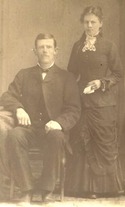
Mary Ann “Minnie” Gilliland Smart
In 1922, Mary Ann “Minnie” Gilliland Smart traveled from Canada to Oregon with her husband Thomas Smart. Her husband had family who had migrated to the Tillamook area. Shortly after, she was admitted to OSH for unknown reasons and died from complications of a stroke.
Minnie wasn’t forgotten by family, said her great-great nephew, David Gilliland of Saskatchewan, Canada. He said he found many letters that mention her, but so far, still no answers as to why she was institutionalized or why no one would have claimed her remains.
“I have no insight into why the family didn’t claim her,” he said. “Her husband was still alive when she passed away in the hospital.”
Gilliland attended the OSH cremains memorial ceremony held Sept. 26 and said he was moved by learning about the lives of the many others whose cremains were not claimed by family.
“We’re in a different time and have a deeper understanding of mental health. She missed that,” Gilliland said of his great-great aunt. “We’re here today to honor her memory. We want to bring that understanding to her.”
Irene Holmes
Irene Holmes was 10 years old in 1922 when she was admitted to Oregon Fairview Home, a Salem residential facility for the developmentally disabled. She died there at the age of 34.
“Nobody had ever mentioned her. Nobody had ever mentioned any of it,” said Terri Templar, Holmes’ great niece. “In a way, I was thinking this was what may be considered a dirty little secret.”
Templar and her daughter, Remy Rust said they’ve worked to understand their ancestors’ decision. The two recently watched a documentary about Fairview that aired on public television and it helped them realize that little was known about developmental disabilities at the time or the care and education that could help have helped Holmes thrive.
“They were poor,” Templar said of Holmes’ parents. “They were just farmers. It was probably just a choice they had to make. What might have been going through their minds to leave her there. Maybe it was hard on them not being able to say anything or maybe they were told to forget about it.”
They plan to inter Holmes’ cremains near her parents and brother.
“That made us feel a lot better that we could take her home and she will be with her family,” Rust said. She won’t be alone. We’ll visit. Every year, we go clean graves and play music. She’ll feel like she’s part of the family.”
It’s been an emotional discovery, they said.
“Part of you just wishes that you could hug her and let her know that it’s OK. You’re safe now,” Templar said through tears.
“We found you,” said Rust.
|
|
|

OSH invites anyone who thinks they may have a family member who passed away at OSH, Oregon State Tuberculosis Hospital, Mid-Columbia Hospital, Dammasch State Hospital, Oregon State Penitentiary or Fairview Training Center to check the online directory.
Families who identify relatives on this list and want to claim the cremains should complete and submit the “Request for Cremated Remains” form. Questions regarding the cremains can be directed to the OSH Health Information Department at 503-945-2976 or at osh.cremains@odhsoha.oregon.gov.
|
|
|
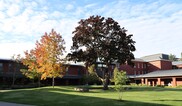 |
|
The Oregon State Hospital Advisory Board includes community members, patients and staff and its work supports patient care, safety and security. As part of its role, the board may review state and federal laws related to OSH policies and procedures and make recommendations to the OSH superintendent, Oregon Health Authority and Legislature.
The board’s final meet of 2023 is at 1 p.m. Nov. 16.
|
|
|
|
The Recovery Times is a quarterly publication that shares stories about the people and programs of Oregon State Hospital in support of OSH’s vision of hope, safety and recovery for all.
OSH serves a patient population that is traditionally marginalized, stigmatized and underserved, including many people with co-occurring disorders and those impacted by structural racism, and disproportionally represented in the criminal justice system.
|
|
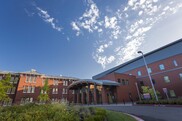 |
|
|
If you need mental health support for any reason, help is out there. |
|
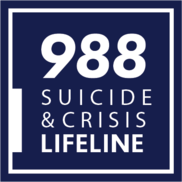 |
|
|
|
|
|